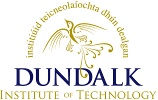Brady, Conor and Davis, Stephen and Megarry, William and Barton, Kevin (2013) Lidar survey in the Brú na Bóinne World Heritage Site. In: Interpreting Archaeological Topography: Lasers, 3D Data, Observation, Visualisation and Applications. Occasional Publication of the Aerial Archaeology Research Group . Oxbow Books, Barnsley, pp. 225-239. ISBN 9781842175163
Preview |
PDF
Download (17MB) | Preview |
Abstract
The ‘Archaeological Ensemble of the Bend in the Boyne’ (usually known as Brú na Bóinne) is one of only two current UNESCO World Heritage Sites in the Republic of Ireland and arguably its best known archaeological landscape, which contains the great Neolithic mounds of Knowth, Dowth and Newgrange. This chapter outlines what is known of the area and discusses analysis of lidar coverage of approx. 90 km2 acquired in 2006 to better inform management of the WHS and to further research in this important landscape. Detailed analysis of this dataset using multiple visualisation techniques (standard analytical hillshade; multi-direction hillshade; Sky View Factor; Local Relief Modelling) was undertaken in 2010–11, revealing a range of new features of potential archaeological interest, including apparent route ways, hollow-ways, embanked enclosures and quarries, as well as providing significant new detail to some already well-known monuments. The applicability of these techniques in this landscape of subtle relief and low earthen banks, is critiqued below. Selected areas, including two previously unrecorded large enclosures (> 100 m in diameter) were targeted through geophysical survey, corroborating and enhancing the lidar-based picture. The use of viewshed analysis is explored, highlighting the importance of tomb visibility against views from the tombs, demonstrating that a Neolithic boat traveller’s first view of the ritual landscape is likely to have been of Newgrange, while all three great tombs would only have been visible from the very apex of the Bend. Finally, while lidar data have provided a wealth of new information regarding the landscape of Brú na Bóinne attention is also drawn to significant recent discoveries which exhibit no topographic expression.
| Item Type: | Book Section |
|---|---|
| Uncontrolled Keywords: | Ireland, Neolithic, World Heritage Site, landscape, viewshed, geophysical survey, visualisation. |
| Subjects: | Arts and Humanities > Archaeology Arts and Humanities |
| Research Centres: | Other |
| Depositing User: | Enda Kelly |
| Date Deposited: | 28 Nov 2018 15:59 |
| Last Modified: | 28 Nov 2018 15:59 |
| License: | Creative Commons: Attribution-Noncommercial-Share Alike 4.0 |
| URI: | https://eprints.dkit.ie/id/eprint/619 |
Actions (login required)
 |
View Item |
Downloads
Downloads per month over past year

